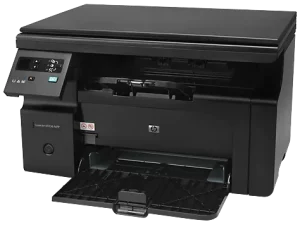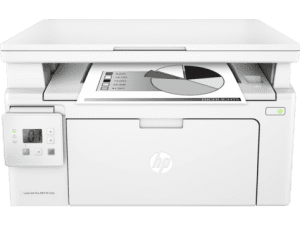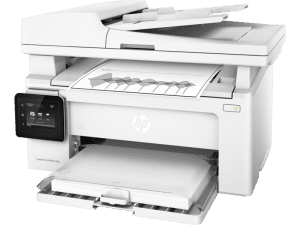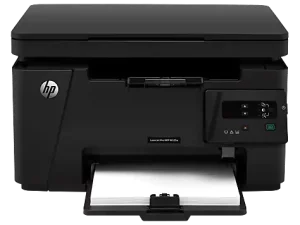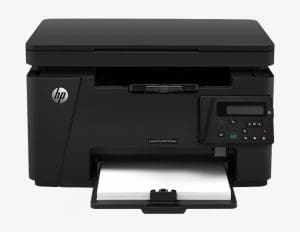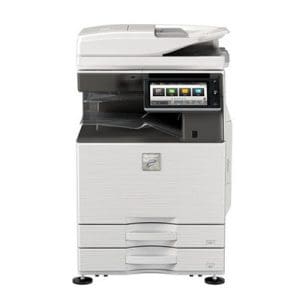
Sharp Universal Print Driver
Published:
September 15th, 2023
Updated:
September 15th, 2023
Developer:
Version:
06.00.06.10
Platform:
Sharp Universal Print Driver Download for Windows
Table of Contents
Sharp Universal Print Driver:
Sharp Universal Print Driver aims to facilitate easy printer and print driver management for IT managers. Using this single driver for multiple printers in your company can increase efficiency by simplifying support, configuration, installation, and setup.
The new user interface uses the same intuitive, product-specific controls your users are accustomed to and reduces calls to the help desk. See how here.
How to Connect Sharp Printer to The Computer or Laptop?
To connect your Sharp printer to your computer or laptop, you’ll need to follow these general steps. Please note that the exact steps may vary slightly depending on the model of your Sharp printer and the operating system of your computer.
- Prepare Your Printer:
- Ensure your Sharp printer is properly set up, including loading it with paper and installing the necessary ink or toner cartridges.
- Power On Your Printer:
- Plug in your printer and turn it on.
- Connect to a Network (if applicable):
- If your Sharp printer has network capabilities (e.g., Wi-Fi or Ethernet), you can connect it to your local network for easy printing from multiple devices. Refer to your printer’s manual for specific instructions on connecting it to your network.
- Connect via USB (if not using network):
- If you’re not using a network connection, you can connect your Sharp printer to your computer via a USB cable. Here’s how:
- Ensure you have a compatible USB cable.
- Connect one end of the USB cable to the USB port on your printer.
- Connect the other end of the USB cable to an available USB port on your computer or laptop.
- If you’re not using a network connection, you can connect your Sharp printer to your computer via a USB cable. Here’s how:
Driver Installation Process:
- Install Printer Drivers:
- Most printers require you to install the necessary printer drivers and software on your computer. These drivers enable your computer to communicate with the printer. You may have received a CD with your printer containing the drivers, or you can download them from the Sharp website or another trusted source.
- Follow the Installation Wizard:
- Once you have the drivers, run the installation wizard, which will guide you through the setup process.
- During the installation, you may be prompted to select the connection method (USB or network) and follow the on-screen instructions.
- Complete the Setup:
- After the driver installation is complete, your computer should recognize the printer. You can now select your Sharp printer as the default printer in your computer’s settings.
- Test Your Printer:
- To ensure everything is working correctly, try printing a test page or document from your computer.
Remember that specific instructions can vary depending on the model of your Sharp printer and the operating system of your computer. If you encounter any issues during the setup process, consult the printer’s manual or contact Sharp customer support for assistance.
Streamlined Printer Management:
Sharp Universal Print Driver simplifies printer management for IT departments by reducing the number of product-specific drivers that must be distributed and installed across the network. This streamlined approach significantly reduces time spent on installation and testing and frees up hard drive space that was previously taken up by multiple drivers. It also provides a consistent user experience and minimizes calls to the help desk by using the same graphics user interface that users are already familiar with.
In addition, the Universal Print Driver automatically determines a printer model and configures the driver’s settings to reflect its features and options. This simplifies the user experience by showing only those document processing features that are supported by the chosen printer. Additionally, administrators can configure the driver to select a particular printer model manually from the Configuration tab in Printer Properties.
The LRS UPD works seamlessly with VPSX output management software to convert documents into printer-ready data streams for each individual print job. This makes it possible to print complex documents like PDFs and spreadsheets without any loss of functionality, even on a full-size monochrome printer with accelerated printing capabilities.
In addition, the LRS UPD is easy to deploy and supports a wide range of Windows operating systems including XenDesktop, Citrix, and Microsoft Terminal Server environments. This allows IT professionals to centrally manage printing across the entire enterprise with a powerful, yet secure, cloud-based solution.
Simplified Configuration:
Many organizations have a mixed print fleet of printers and multifunction devices that require both original printer drivers and model-specific or universal print drivers. The use of a UPD is an easy way to minimize management and support costs by reducing the number of driver packages and maintaining a single driver for all models.
The UPD can automatically detect a printer model and configure its user interface to show only the features that are supported by the selected printer. For example, only the paper sizes, trays, and finishing options that the device supports are displayed. Which increases efficiency for users and reduces help desk calls.
Administrators can also use the UPD to encourage environmental policies. Such as duplex printing and multiple-page (N-up) printing. By default queue settings, the UPD encourages resource-saving practices that will help organizations reduce their environmental footprint and associated expenses.
Tech Tip:
Depending on the organization’s choice of print management software. It may be necessary to use a universal print driver in order for that solution to manage and monitor the device. This is especially true for solutions that do not manage original printer drivers. Fortunately, the UPD is compatible with most solutions and will provide users with a similar experience to that of using their device’s original driver. The UPD is fully backed up by the Lexmark Driver Update Utility.
Reduced Network Traffic:
Using multiple printer drivers takes up resources that could otherwise be used for more important work. Plus, some printer drivers can leave monitoring services running on the computer. Further draining system performance. That’s why it’s important to minimize the number of different drivers in use and standardize the ones that are deployed to end users.
One way that LRS UPD helps is by reducing the amount of data that is transmitted between a Windows desktop and the VPSX output management software. This reduces network traffic as well as the number of print jobs that are executed at any given time, reducing print server load and improving overall printing performance.
Another way the LRS UPD can help is by ensuring that only features supported by a specific printer model are displayed on the user interface. This eliminates the confusion that can occur when an organization offers a wide range of devices with similar capabilities and prevents users from selecting the wrong device by accident.
This also simplifies replacing or updating network printers. As it requires no requalification by the driver. Once the driver discovers a new printer. It automatically updates the user interface to show only the features and options that are supported by the specific device. This significantly reduces the time required for administrators to maintain their print infrastructure.
Secure Printing:
When you print a document using your Sharp multifunction printer. You can choose to either save the document as an HDD file or as a secure PDF. The latter option allows you to require a PIN code or password for printing. Preventing unauthorized access to the document. You can do this by going to the touch screen and touching Document Filing or HDD File Retrieve.
With a single driver, you can simplify device management for your organization and reduce network traffic. This helps your IT team spend less time deploying and maintaining multiple driver packages. Making it easier to manage your printing environment.
The single driver also helps to minimize hardware and software costs for your company by reducing the number of drivers deployed on end users’ computers. This enables you to streamline your IT support processes and reduce the amount of storage space occupied by different drivers on servers and workstations.
With the Unified Print Driver. You can help achieve your green business goals by implementing print policies that help to reduce paper and toner usage. Additionally, you can use the Unified Print Driver to monitor your print output and report on a variety of environmental data such as waste, power consumption, energy, carbon dioxide emissions, and more. The solution works with uniFLOW to automatically receive this information from your devices and then apply the appropriate settings to your user accounts. This eliminates the need for the administrator to manually update printer drivers and queues on end-user machines.
